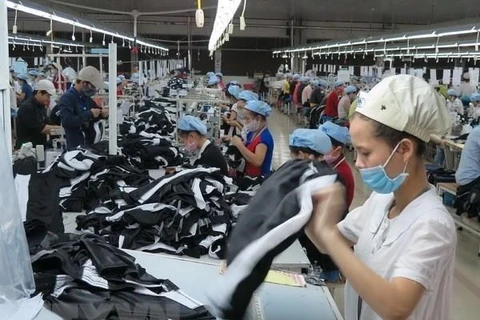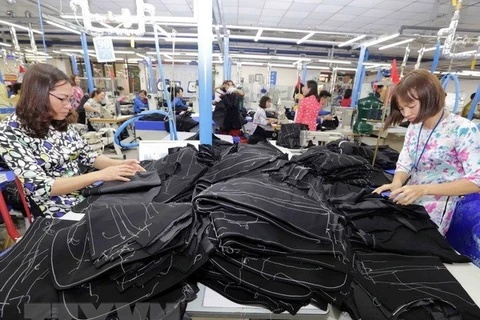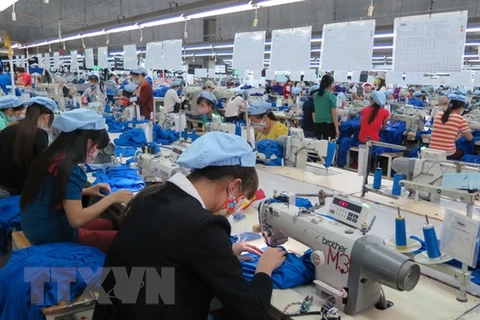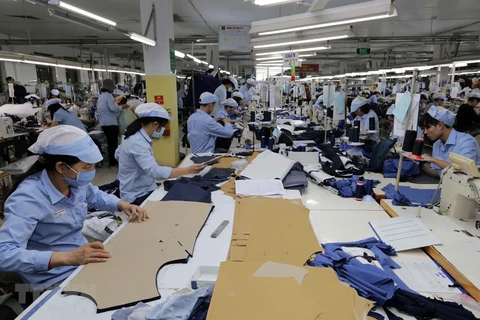Hanoi (VNA) – Local garment producers have so far received less order than 2018 and the shortage of orders is becoming more common, heard a press conference held by the Vietnam Textile and Apparel Association (VITAS) in Hanoi on July 19.
The number of orders in the first half of 2019 was just equivalent to 70 percent of the figure in the same period last year, said VITAS Vice President Truong Van Cam.
As the apparel industry grew by less than 9 percent by the end of June, it must expand 11 – 12 percent for the remaining months to fulfill the goal of earning 40 billion USD from exports this year.
Other major textile and garment producers like India and Indonesia are facing a similar situation as demands from customers are getting higher while pressure to cut cost and higher trade barriers, such as import duties or quality inspection are also taking a toll on them, he explained, saying that Vietnamese firms are no exception.
Foreign countries have taken several measures to support their domestic exporters, for example, cutting corporate income tax and duties on imported apparel materials, and devaluing their currencies, making it more difficult for Vietnamese enterprises to compete with, Cam added.
He hoped that the situation would improve in the last six months as it is normally the time for high-value orders for products like jackets, suits and winter sportswear.
Nguyen Thi Hong Anh, VITAS Vice Secretary General, said to attract more orders, local producers must strictly comply with requirements of buyers and protect workers’ rights.
According to the VITAS, the textile and garment industry earned approximately 18 billion USD from exports in the first half of 2019, up 8.61 percent year on year. The figure included 14.02 billion USD worth of clothing and 1.02 billion USD worth of fabrics, up 8.71 percent and 29.9 percent, respectively.
The US remained the biggest buyer who imported 7.22 billion USD worth of textile and garment products, up 12.84 percent from a year earlier. It was followed by member states of the Comprehensive and Progressive Agreement for Trans-Pacific Partnership (CPTPP) (2.57 billion USD, up 11.13 percent), the European Union (2.05 billion USD, up 10.46 percent), and the Republic of Korea (1.37 percent, up 5.59 percent).–VNA
VNA
























